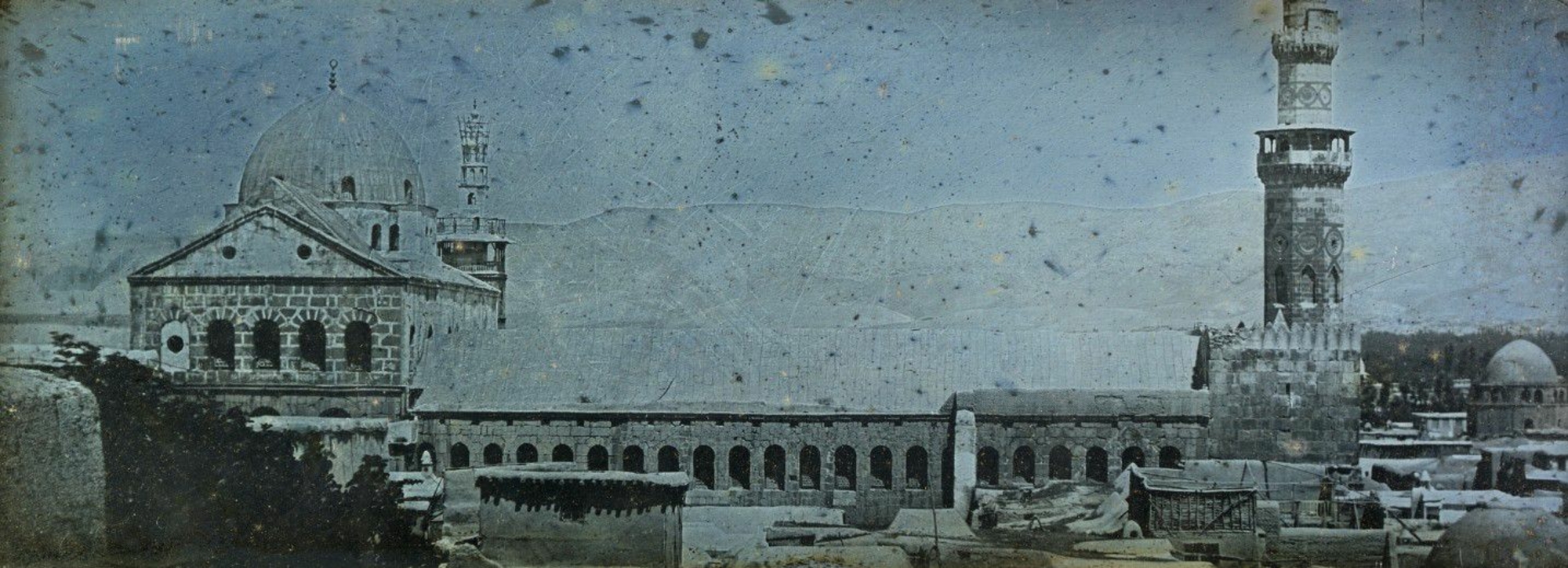
- Home
- Explore the site
- A mosque at the heart of the city
- Prestige and posterity
Then as now, the prestigious Umayyad mosque in Damascus made a lasting impression on visitors.
A wonder of creation
The mosque was a magnet for travellers to the East, including the Spaniard Ibn Jubayr, who described his visit in 1184, and it was always included among the wonders of creation, along with the Kaaba in Mecca, the Mosque of the Prophet in Medina, the talking trees on the island of Wak Wak and other real or imagined creatures. The mosque is therefore often depicted in illustrated manuscripts of the Wonders of Creation (ʻAjāʼib al-makhlūqāt), composed by the Persian al-Qazwini in the 13th century, which enjoyed great success in the medieval and later periods.
A regional model
A masterpiece of early Islamic art, the Umayyad mosque may be based on the plan of the al-Aqsa Mosque in Jerusalem built by the father of al-Walid I, ʿAbd al-Malik, and completed by al-Walid. The al-Aqsa mosque has been considerably altered since, and no longer resembles the earlier Umayyad version.
However, the Umayyad mosque did inspire architects working in the region. The mosque founded by al-Walid in Aleppo had a similar plan and the same rich mosaic decoration, which did not survive later alterations. It directly inspired the basilica plan of the great mosque of Homs built in 782 and largely altered in the 12th century. In the 960s, the Umayyad caliph al-Hakam II followed in the steps of his forefathers in Damascus by transforming the decoration of the great mosque of Córdoba in Spain with rich, glittering gold-ground mosaics. Sultan Malik-Shah, who restored the prayer hall of the Damascus mosque, rebuilt the great mosque of Diyarbakir in Turkey in 1092, the plan of which is almost identical to its counterpart in Damascus.
Lastly, the same Umayyad mosque also inspired the architect of the al-Tawba mosque, founded in Damascus in 1234. Built several centuries later, it stands testament to the enduring appeal of its model.


